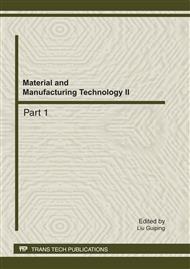p.199
p.204
p.210
p.215
p.221
p.226
p.231
p.242
p.247
Research on Microbial Degradation of Corn Stalk
Abstract:
Microbial degradation of crop stalk is essentially biochemical processes that microbe and cellulose produced by microbe degrade crop stalk, the reaction has the characteristics of mild reaction conditions, little or no by-product. The degradation transformation process of crop stalk involves many complex chemical and biochemical processes, these bacteria play a key role in transformation process. This paper studied the ferment conditions and process of corn stalk, determined chemical composition before and after degradation and analyzed changes condition. Both degradation rate and the high and low enzyme show the best strain to degrade is Viride 9782, followed by Aspergillum Niger 9532.
Info:
Periodical:
Pages:
221-225
Citation:
Online since:
September 2011
Authors:
Keywords:
Price:
Сopyright:
© 2012 Trans Tech Publications Ltd. All Rights Reserved
Share:
Citation:


